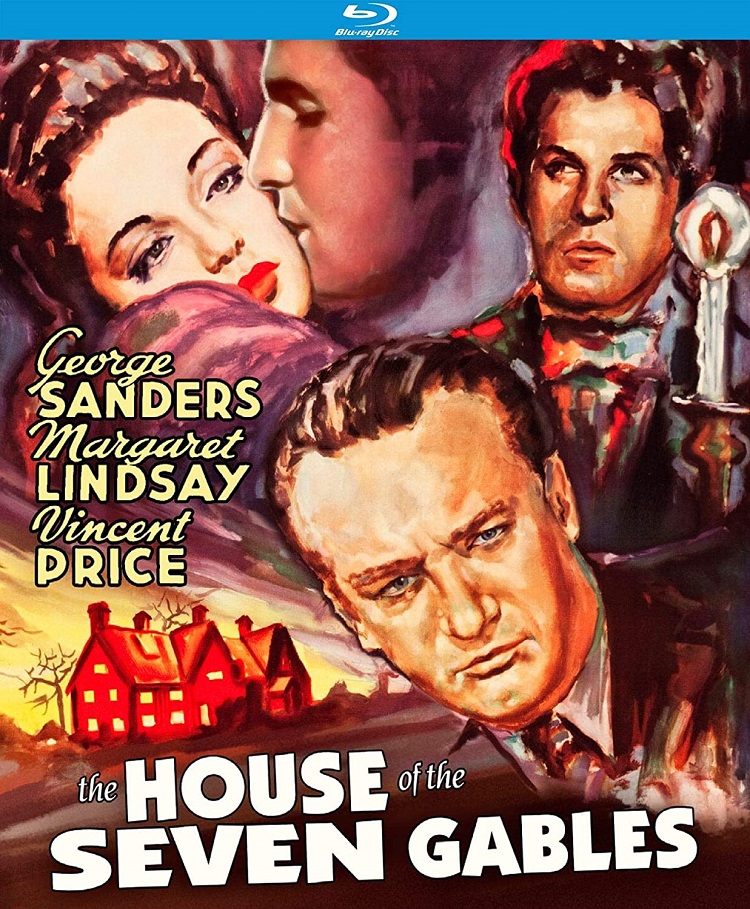
Throughout the 1920s and early 1930s, Universal Studios was known for their horror films. They unleashed into cinemas a string of successful monsters such as Dracula, Frankenstein’s Monster, the Mummy, and the Wolfman. Countless sequels and imitators followed. In 1935, they released The Raven with two of their biggest stars, Bela Lugosi and Boris Karloff. They expected a huge hit. They got a dud that stirred controversy for its use of torture, disfigurement, and revenge, which ultimately led to horror films being briefly banned in England and stopped all production of the genre at Universal.
But within a few years, things had once again changed and when Universal noticed that a New York City theater was running a very successful marathon of several of their old horror films, they started production on a slew of horror films including sequels for Frankenstein, The Invisible Man, and The Mummy. They also greenlit an adaptation of Nathaniel Hawthorne’s novel The House of the Seven Gables. Screenwriter Lester Cole made numerous changes to the novel adding in his own anti-establishment, anti-capitalist views and trimming or changing much of the plot. They hired two up-and-coming actors, George Sanders and Vincent Price, to star in it and ultimately made a very popular and successful film.
A few title cards explain that in the 17th century a rich man named Jeffrey Pyncheon coveted a poor carpenter named Matthew Maule’s land so he accused Maule of witchcraft, sending him to the gallows, allowing Pyncheon to build the titular house. But just as the last brick was laid, Pyncheon fell down dead causing locals to believe the house has been cursed.
A century and a half later, Jeffrey’s grandson, Garold, summons his oldest son, Jaffrey (Sanders), back to the Seven Gables from Boston where he has just embarked on a successful career as a lawyer. The old man informs Jaffrey that the family finances are in shatters and they must sell the house to settle the debt. Jaffrey not only believes in Maule’s curse but also in the legends that say their ancestor has vast sums of gold inside the walls of the house. He is infuriated to learn they are selling the house and tries to talk his father and his brother Clifford (Price) out of it. For his part, Clifford is glad to be rid of the house. He doesn’t believe in the curse or the gold but feels the Pyncheons have a long history of being horrible people and wants to get out from that shadow, move to New York, and marry cousin Hepzibah (Margaret Lindsay).
Soon after, Garold dies of a heart attack while arguing with Clifford over the house – Garold was softening to Jaffrey’s desire to not sell. Jaffrey swoops in and accuses Clifford of killing the old man, gathering testimony from the nosey neighbors who heard Clifford and Garold arguing. Clifford is found guilty and spends the next couple of decades in prison. Jaffrey gloats and immediately makes plans to tear the house apart looking for the gold.
But surprise! The old man left Hepzibah the house and she kicks Jaffrey to the curb, announcing he is never welcome back. Decades pass. Jaffrey becomes hugely successful as a lawyer in the city (or so it seems, we’ll find out differently later in the film). Hepzibah becomes an old maid in the decaying house, pining for the return of Clifford. He becomes friends in prison with Matthew Maule (Dick Foran), a descendant of the original Matthew Maule who is now an abolitionist. In time, Clifford is released from prison and returns to the Seven Gables home. Much melodrama ensues – romance for Clifford and Hepzibah, scheming treachery for Jaffrey. It is a very plot heavy film and I’ve left out some of the finer details, but it’s well made and well told.
Though made under the Universal Horror umbrella and part of their relaunching of the genre, there aren’t any scares to be found. Storywise, it is straight melodrama with a few gothic touches. Made on a b-movie budget, it still looks quite good with some excellent lighting and a nicely authentic-looking set for the Seven Gables house. The acting is good. It is always a delight to watch George Sanders sneer and Vincent Price plays a good hero. It’s fun to watch him in that sort of role after experiencing him as the villain in so many other horror films. Margaret Lindsay does an excellent job as Hepzibah, who turns from such a young woman full of life to an embittered old maid finally given up hope when Clifford returns. There is a lovely scene when Clifford returns home. He and Hepzibah are both desperate to hold each other again, but are also terribly afraid what the other will think of them having been so far apart for so long. It is beautifully shot and quite touching.
All together it is a fine film. I enjoyed watching it but I can’t say it will remain in the memory banks for long. I’ve not read the Hawthorne novel so I can’t say how far it diverges from it, but my understanding is that it changed a lot of the story but maintained the general themes.
Kino Lorber presents The House of the Seven Gables in a 1.37:1 ratio with a 1080p transfer. Extras include an informative commentary by film history Troy Howarth and some trailers for other Kino Lorber releases.
The House of the Seven Gables is a mostly standard melodrama from Universal with some good performances and solid direction. It never quite rises into the realm of classic, but it is well worth a watch.